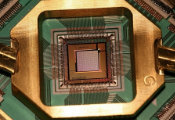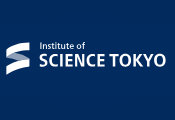European Research Council Funding for Outstanding Joint Project in Quantum Physics
November 05, 2024 -- Professor Igor Lesanovsky from the Institute of Theoretical Physics at the University of Tübingen, Professor Ferdinand Schmidt-Kaler from Johannes Gutenberg University Mainz (JGU) and Professor Markus Hennrich from the University of Stockholm have been awarded a Synergy Grant from the European Research Council (ERC). Their research project uses quantum simulators consisting of electronically excited ion crystals to tackle unsolved questions in physics, but also to illuminate complex processes in chemistry, biology, and information processing. The ERC is providing funds of nearly EUR 10 million over a period of six years. Around EUR 3.5 million of these are earmarked for the research at JGU. With the Synergy Grants, the ERC supports a network of two to four research groups that contribute their different expertise to the joint work on challenging research questions. Funded projects are intended to conduct research at the interfaces between disciplines and lead to new findings at the frontier of current knowledge.
Ion crystal as central system component
In the ERC project Open 2D Quantum Simulator (Open-2QS), the researchers will realize precisely controllable quantum systems. For this purpose, ions are held in traps where they form regular two-dimensional structures known as ion crystals. Selected ions are then excited with laser pulses and thereby brought into strong interaction. The dynamics that arise in such a synthetic quantum system are so complex that predicting them is far beyond the capacity of conventional computers. "Until now, synthetic quantum systems created in the laboratory have been very short-lived. Our goal in the ERC Synergy project is to dramatically extend their life. This will open up completely new possibilities for research into complex states of matter, such as novel quantum glasses," Igor Lesanovsky explains.
Observing synthetic quantum systems
For this project, three pioneers in the field of electronically highly excited ions are pooling their expertise. To achieve their ambitious goal, the researchers exploit some of the special properties of atomic ions. These lack an electron and are therefore positively charged; consequently they repel each other. "The ions are surrounded by an electric trap. Yet the forces are balanced: the system is enclosed by the trap, but the ions remain at a distance from each other due to their repulsion. This is precisely how ion crystals form. This kind of system is so stable that it can be studied over many hours," says Ferdinand Schmidt-Kaler.
The ions can then be illuminated with laser beams to excite them. "Another electron in the shell is put into a higher energy state. You then have a doubly positively charged nucleus with an electron in a far-out orbit. Ions in this state are known as Rydberg ions. Two neighboring Rydberg ions interact, like two magnetic needles that influence and align each other," says Markus Hennrich. The laser pulses can then be used to switch the interactions within such a synthetic quantum system on and off. This capability can help researchers to better understand complex magnetic materials. Laser excitation can also cause spontaneous light emission from the quantum system, allowing it to be observed in real time. This kind of open system which exchanges energy with its surroundings is to be used in the ERC project to observe chemical and biological processes which otherwise would not be directly accessible.
The complexity of the quantum dynamics in large systems is unimaginable. For example, 300 particles, each of which can assume two states, feature a number of distinct configurations which exceeds the number of atoms in the visible universe. "What is highly interesting about such systems is their emergent behavior. This means that the properties of the overall system exhibit completely new phenomena that would never have been expected from the properties of a single particle alone – just as a large flock of birds moves completely different in the sky compared to the path of a single bird. In recent years, theoretical quantum physics has appeared to run ahead of experimental progress. However, nowadays we are getting many new impulses from the data of extremely well-controlled quantum simulator experiments, which stimulates the development of new methods in theory," says Lesanovsky. This makes collaboration between experimental and theoretical researchers, as here in the ERC Synergy project, essential to achieving progress.




































